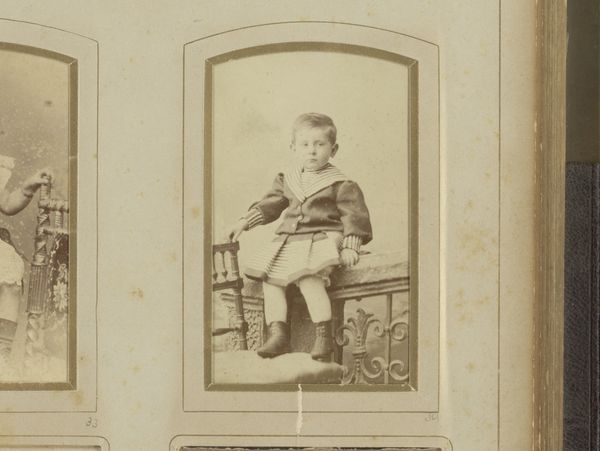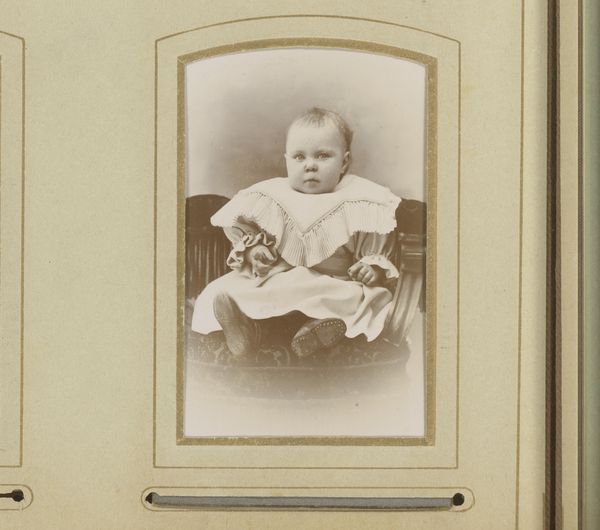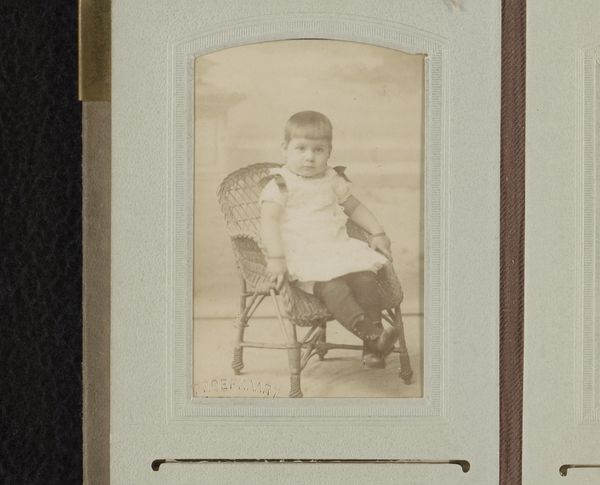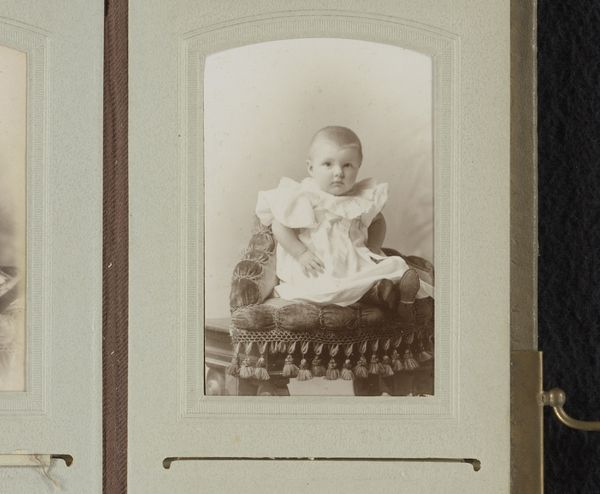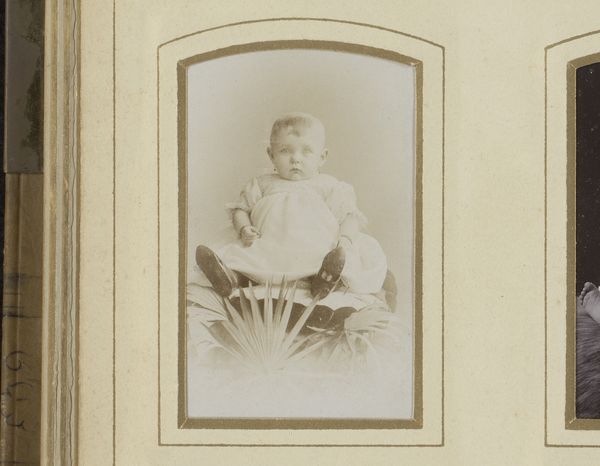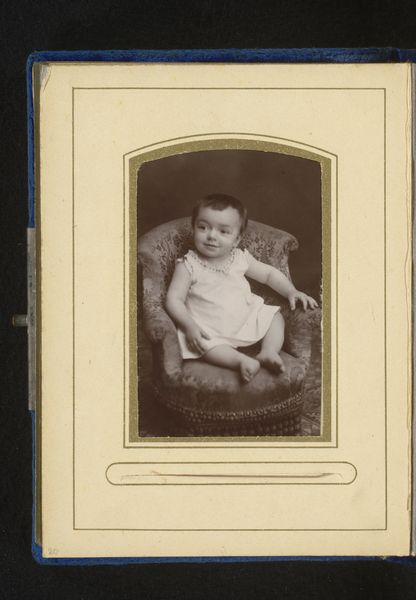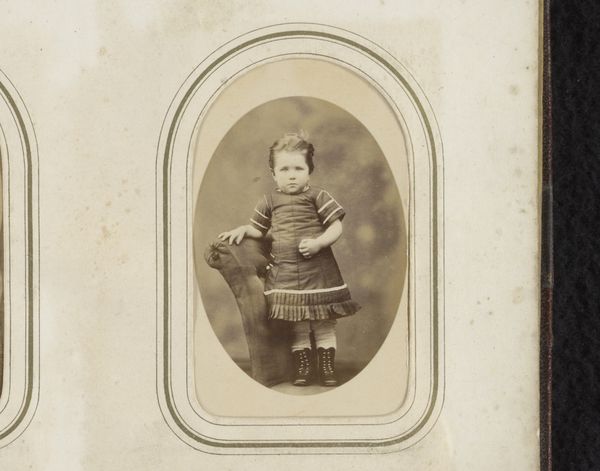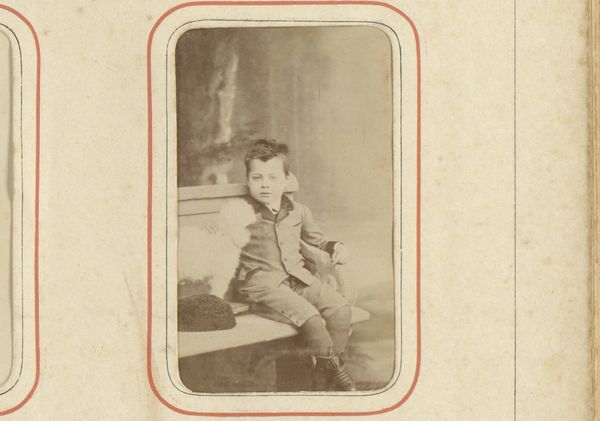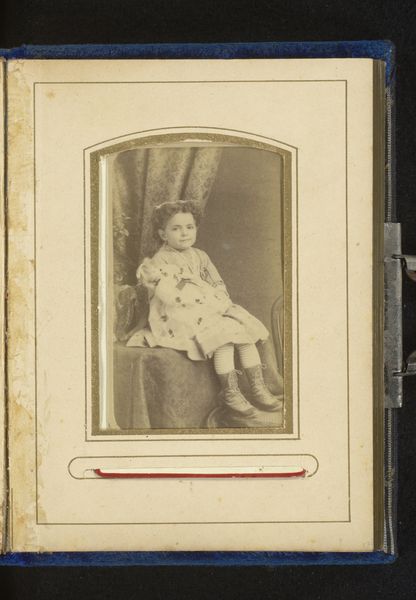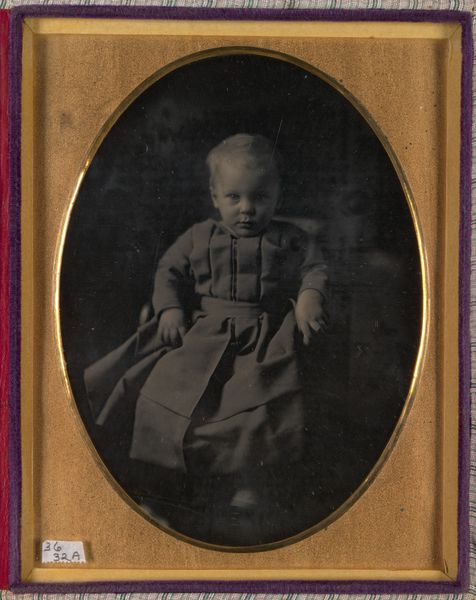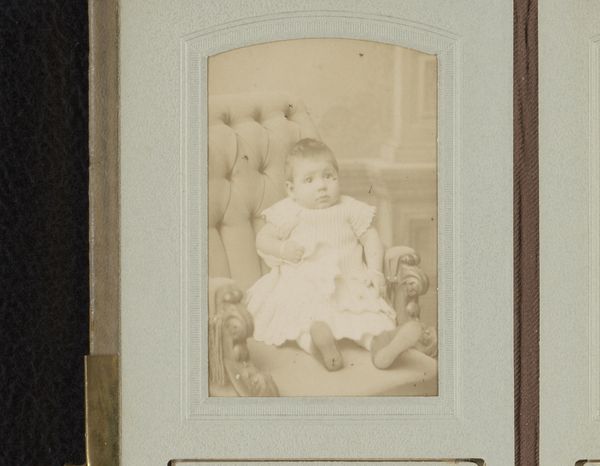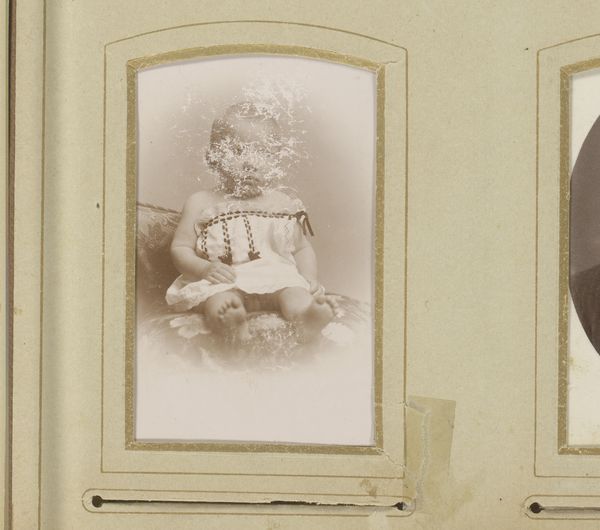
photography
#
portrait
#
photography
#
genre-painting
Dimensions: height 84 mm, width 54 mm
Copyright: Rijks Museum: Open Domain
Curator: Looking at this charming photograph from around 1890 to 1910, titled “Portret van een baby op een stoel,” which translates to “Portrait of a baby on a chair,” you can almost feel the past. Editor: There is something deeply melancholic about the sepia tones, don’t you think? The baby’s wide eyes, almost startled, in contrast with that rather oversized wicker chair... it really highlights vulnerability, doesn’t it? Curator: Absolutely. Genre portraits like this are fascinating when you examine them within the social context of the era. Photography was becoming more accessible, yet formal portraits like this, often for family albums, still represented a significant investment. They captured not just a likeness, but also aspirations about family identity. Editor: And isn't there also an element of constructed identity here? The clothing – that wooly collar! – the staged setting, all point to a controlled presentation of idealized childhood, and what the parents perhaps aspired this child would be? I wonder about the historical understanding of infancy at this time—were they already feeling pressures? Curator: Precisely. You’re spot on. Looking through a lens of feminist theory, we could consider the unseen labour involved in preparing and maintaining these photographs and this idyllic family picture. The maternal influence is there by its near invisibility, isn’t it? Editor: Right. Thinking about institutional power, I mean, Rijksmuseum has this photograph carefully preserved. Its existence today implies curatorial decisions shaped by socioeconomic and gendered dynamics over decades, preserving not only history, but a curated representation. Curator: Indeed, it asks us to question whose histories we preserve and how we frame those stories for current and future audiences. Editor: For me, that baby's questioning gaze pulls you in regardless of all that analysis. Curator: For me, considering these historical details adds crucial texture to our experience of something as immediate as a glance from the past.
Comments
No comments
Be the first to comment and join the conversation on the ultimate creative platform.
